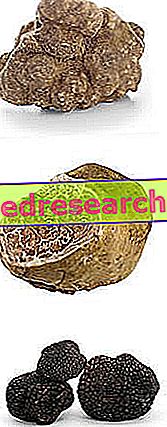MYCOSTATIN ® is a drug based on nystatin
THERAPEUTIC GROUP: Antibiotic - Intestinal antimicrobial
IndicationsAction mechanismStudies and clinical effectiveness Usage and dosage instructionsWarnings Pregnancy and lactationInteractionsContraindicationsUndesirable effects
Indications MYCOSTATIN ® Nistatina
MYCOSTATIN® indicated in the treatment of oral, esophageal and intestinal infections sustained by Candina.
Mechanism of action MYCOSTATIN ® Nystatin
Nystatin contained in MYCOSTATIN ® is one of the few oral antifungals, well tolerated and free of clinically relevant side effects.
Administered orally, it is poorly absorbed from the gastrointestinal tract, concentrating in the intestinal lumen where it performs its biological function.
Nystatin is in fact particularly effective in the treatment of Candina-supported infections, probably by binding to the sterols of the membrane of these fungi and altering the normal electrolytic and molecular flow.
The antifungal action is therefore carried out with high efficacy, while MYCOSTATIN ® does not appear to have an appreciable antibacterial or antiparasitic activity.
Studies carried out and clinical efficacy
1. INTENSIVE THERAPY, CANDIDIASIS AND NISTATIN
Patients admitted to intensive care are at high risk of infection with Candida. This infection could result in a significant lengthening of the hospital stay, worsening the physical condition of the patient. Administration of nystatin in 98 intensive care patients ensured a significant reduction in the incidence of candida infection, with no clinically relevant side effects.
2. ANTIFUNGAL THERAPY IN PATIENTS WITH HIV
The significant drop in the immune defenses induced by the HIV virus exposes AIDS patients to repetitive infections, including also candidiasis of the oral cavity. The latter definitely worsen the quality of life of affected patients for which effective therapy must be used. Despite the administration of fluconazole and the like, as of today the most effective treatment plan appears, the onset of resistant fungi and the high cost of therapy, are pushing clinicians towards the use of alternative drugs such as nystatin
3. CANDIDA INFECTIONS IN THE NEONATAL PHASE
Candida infections, representing one of the most important pathological conditions that can significantly increase the mortality of infants admitted to intensive care units. Today, as a preventive strategy, fluconazole is used, although alternative therapy with nystatin is being evaluated and validated.
Method of use and dosage
MYCOSTATIN ® confetti with 500, 000 IU nystatin or oral suspension of 100, 000 IU nystatin per ml: the administration of this medicine should be done simultaneously with that of the antibiotic, to prevent the appearance of intestinal moniliasis with about 1 sugar 3 times a day.
For the treatment of candidiasis of the oral cavity the dosage can be increased to 1 sugar per 4 times a day.
In any case, both the formulation of the correct dosage and the overall duration of the therapy should be established by the doctor after a careful evaluation of the patient's clinical picture.
Warnings MYCOSTATIN ® Nistatina
Therapy with MYCOSTATIN ® must be continued for as long as the doctor decides, despite the improvement in symptoms.
The use of this medicine is intended to treat localized candidiasis, as the absence of systemic absorption prevents its generalized and widespread effect.
PREGNANCY AND BREASTFEEDING
The absence of both experimental and clinical studies related to the toxic effects of nystatin on the fetus, when taken during pregnancy and lactation do not allow to clarify the safety profile of this compound.
Consequently, the intake of MYCOSTATIN ® during the entire period of pregnancy and lactation should be guaranteed only in case of irremediable necessity and under strict medical supervision.
Interactions
Given the low degree of systemic absorption of the antibiotic, no significant pharmacokinetic and clinical interactions between MYCOSTATIN ® and other drugs have been described.
MYCOSTATIN ® Nistatin Contraindications
MYCOSTATIN ® is contraindicated in case of hypersensitivity to the active ingredient or to other elements belonging to the category of polyenes, and during the period of pregnancy and lactation.
Undesirable effects - Side effects
Treatment with MYCOSTATIN ® was detected, both from clinical trials and from post-marketing monitoring, without clinically significant toxic effects.
The occasional presence of diarrhea, nausea, vomiting and intestinal pain were the only side effects most frequently described.
The appearance of urticarial skin reactions has been observed in rare cases of hypersensitivity to the active ingredient.
Note
MYCOSTATIN ® is a medicine that can be sold under prescription.



